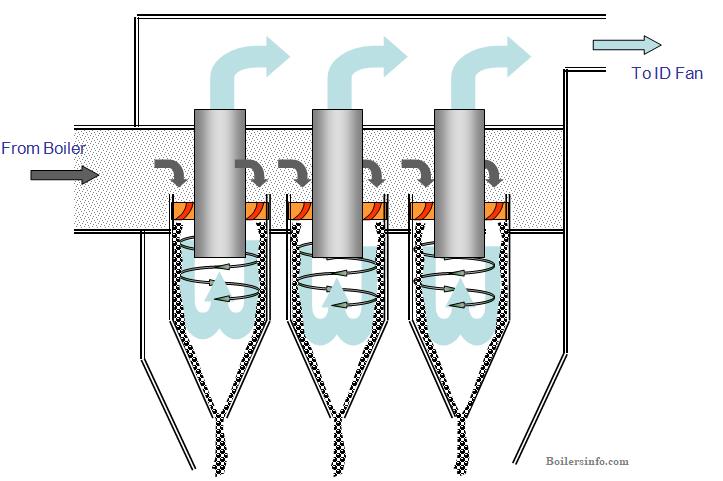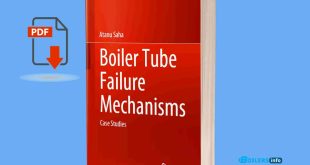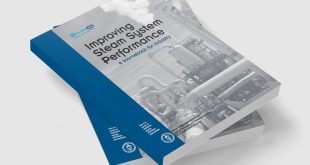Boiler Grit Arrestor Working Principle: Ensuring Efficient Boiler Operation
In the world of industrial and commercial boilers, ensuring their optimal performance is crucial for a wide range of applications. One key component that plays a significant role in this process is the boiler grit arrestor. This article will delve into the working principle of a boiler grit arrestor, its importance in boiler systems, and how it contributes to the overall efficiency of these essential machines.

Understanding the Basics: What is a Boiler Grit Arrestor?
Before we dive into the working principle of a boiler grit arrestor, it’s essential to grasp its basic function and purpose. A boiler grit arrestor is a vital component of a boiler system designed to remove solid particles and impurities from the flue gas before they can enter the main stack or chimney.
It is an iron coffin made of a mild steel plate that contains a number of cyclones. its function is to catch small particles/dust that come out of the boiler fire pipe and flow with the hot gas. Also commonly called a multi-cyclone. Dirty gas flows through the cyclone and moves centrifugally so that heavy particles/dust will be on the outer side down the cone part and then out at the bottom of the grit arrester. Next, these particles/dust exit through the ash rotary valve into the storage drum. Condition the ash rotary valve so that the grit arrester can work well. Any gap or clearance between the valve blade and casing that is too loose must be repaired or replaced.
The Significance of Solid Particle Removal
Solid particles, also known as grit, can be present in the flue gas due to various reasons, including combustion processes and the fuel used. These particles can range in size and composition and have the potential to cause severe damage to the boiler system if not adequately addressed.
Protecting Boiler Components
One of the primary reasons for employing a boiler grit arrestor is to protect the sensitive and critical components within the boiler, such as the economizer, superheater, and boiler tubes. The accumulation of grit on these surfaces can lead to corrosion, reduced heat transfer efficiency, and ultimately, decreased boiler performance.
Environmental Considerations
In addition to safeguarding the boiler itself, the removal of solid particles is essential for environmental compliance. Emitting particulate matter into the atmosphere can have adverse effects on air quality and may result in regulatory fines and penalties.
The Working Principle of a Boiler Grit Arrestor
Now that we have established the importance of a boiler grit arrestor let’s explore how it actually works to accomplish its intended functions.
Grit Separation Mechanism
A boiler grit arrestor operates on the principle of centrifugal force. As the flue gas laden with solid particles enters the grit arrestor, it undergoes a change in velocity. This change in velocity causes the heavier grit particles to move toward the outer wall of the grit arrestor while the cleaner gas continues its path towards the stack.
Gravity Takes Over
Once the solid particles have been pushed towards the outer wall, gravity takes over. The collected grit then falls into a hopper or collection tray at the bottom of the grit arrestor, where it can be safely removed from the system.
Maintenance and Cleaning
Regular maintenance and cleaning of the grit arrestor are essential to ensure its continued effectiveness. The collected grit can be disposed of properly, preventing any buildup that could compromise the boiler’s performance.
Benefits of Using a Boiler Grit Arrestor
The utilization of a boiler grit arrestor offers several significant advantages for boiler systems:
Enhanced Boiler Efficiency
By preventing solid particles from entering critical boiler components, a grit arrestor helps maintain optimal heat transfer rates and combustion efficiency, ultimately leading to cost savings.
Extended Equipment Lifespan
Reducing the wear and tear caused by grit particles extends the lifespan of boiler components, minimizing the need for costly replacements and repairs.
Environmental Compliance
Meeting environmental regulations and emission standards is crucial for businesses. A grit arrestor ensures compliance by capturing particulate matter before it’s released into the atmosphere.
Improved Air Quality
For industries located in populated areas, reducing emissions of particulate matter contributes to improved local air quality, benefiting both the environment and the community.
Conclusion
In conclusion, a boiler grit arrestor is an essential component of boiler systems that plays a pivotal role in maintaining efficiency, protecting critical equipment, and ensuring compliance with environmental regulations. Understanding its working principle and the benefits it offers can lead to more efficient and sustainable boiler operations.
FAQs (Frequently Asked Questions)
- How often should a boiler grit arrestor be cleaned?
- The frequency of cleaning depends on factors like the type of fuel used and the operating conditions. Regular inspections can help determine the appropriate cleaning schedule.
- Can a boiler grit arrestor be retrofitted into an existing boiler system?
- Yes, boiler grit arrestors can often be retrofitted to existing systems to improve their performance and compliance with regulations.
- Are there different types of boiler grit arrestors available?
- Yes, there are various types of grit arrestors, including centrifugal and cyclonic models, each with its own advantages and applications.
- What happens if a boiler grit arrestor is not used?
- Without a grit arrestor, solid particles can enter critical boiler components, leading to reduced efficiency, increased maintenance costs, and potential environmental violations.
- Are there any safety considerations when working with boiler grit arrestors?
- Yes, safety measures should be followed during installation, maintenance, and cleaning to prevent accidents and ensure compliance with safety standards.
 Boilersinfo Boiler and Mechanical Power Digital Library
Boilersinfo Boiler and Mechanical Power Digital Library








